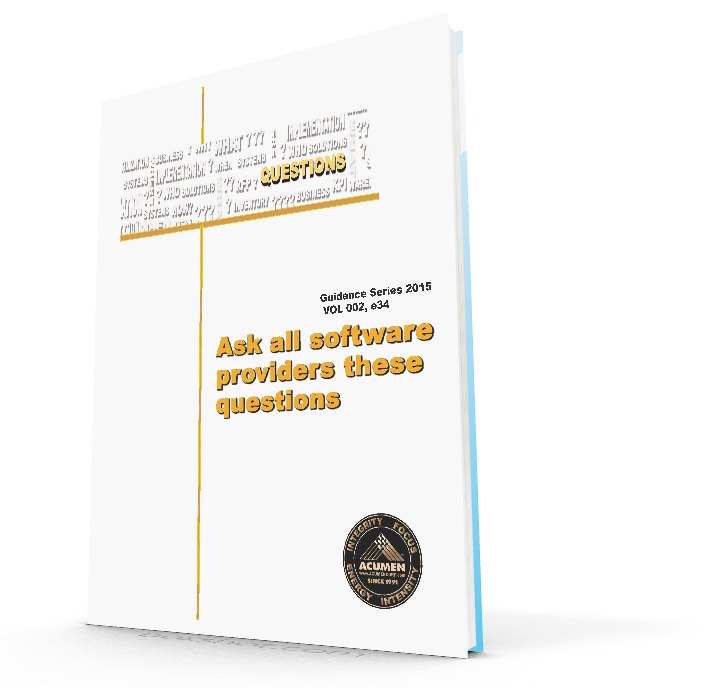The Scorecard for Wholesalers: Turns and Earns Analysis
By Phil Perkins
President and CEO, ACUMEN Corporation
In our daily life here in the United States it seems we always find a way to “rate” or “index” anything we do. If you have read any of my blogs or even my books, you know I am apt to use a sports (and particularly football related) analogy at any given moment. And yes, this blog will be no exception. Take for instance NFL quarterbacks.
Anyone who watches football on Sunday afternoon hears the commentators mention “quarterback rating” at least twice during each game. But does anyone actually know what that means? I’d love to explain it to you, but alas the actual computation is proprietary to ESPN.
Suffice it to say that an NFL quarterback is rated on virtually every aspect of his game (as opposed to the older “passer rating” that examined only that part of his performance). The resulting quarterback rating ranges from 0 to 100 with 50 being considered average (I saw that coming didn’t you?).
But I digress. Back to moving inventory.

Inventory Performance Also Has a Rating System
Actually there are a number of ways of looking at how well your inventory is performing for you. In a prior blog I discussed carrying costs and asked some of my clients to weigh in. If you remember, one of them responded that he didn’t pay much attention to that debatable measurement but was more focused on turning his inventory at the appropriate clip.
I mentioned that it sounded to me like the “turns and earns” method of monitoring performance and inventory profitability. Luckily how this rating is determined isn’t proprietary, although the index is somewhat subjective as a measuring tool. Hedges and Company, a digital marketing company in Hudson, Ohio defined the computation as follows:
“To calculate the Turn/Earn index for your inventory, simply multiply gross margin
x turnover (“turnover” is simply your inventory turns). For example, if your inventory
turns 5 times a year and you have a 35% margin your Turn/Earn index is 175 (35×5 = 175).”
Hedges goes on to say that most companies look for a minimum index of 100 to 175, although my recent research indicated that performance at a 120 index is realistic and sustainable.
Since the Turn/Earn index is focused on profits, of course, if you can only squeeze a 20% margin from your typical inventory item or line of products it stands to reason that you’ll need more turns to realize your profit goals. To achieve a 120 index with a 20% margin it would follow that you would work to achieve 6 turns per year.
Whatever measurements you use, the goal is to have inventory available when you need it and where you need it so that you can maintain outstanding service levels and solid customer satisfaction. And of course you want to do all that and remain profitable. In most businesses our customers have alternatives and constantly monitoring key indicators in inventory performance and “twisting the knobs” to insure appropriate stocking and insuring your “available to promise” capability is a daily reality for wholesalers all over the country.
This just In: I asked my friend and client Dave Brooks to weigh in on this measurement methodology. Dave is the CEO of ACF Environmental here in Richmond and one of the most pragmatic and impactful executives I know. I often run management issues and concepts by him and he never fails to add a real world perspective. Here is Dave’s comment on T&E.
“I think Earns & Turns is a very useful analysis tool. It’s a great measure of the profitability of a product. Only thing I would add is that you still have to look at products from multiple perspectives. The high-volume core of your product line should have high ratios – more like 200. B items will have a lower ratio, but might still be just as important to your line – since the could be needed to fill out your product line and sell more A items. Like in most businesses, one measure never gives you the whole picture.”
Thanks, Dave! And now if our quarterback could just get his numbers up.



